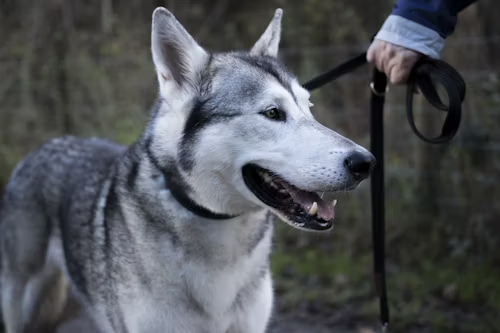Creating a dog-friendly garden involves more than just adding a few pet-friendly plants. It’s about crafting an outdoor space where your canine companion can play, explore, and relax safely. Whether you have a large backyard or a small urban patio, designing a garden that caters to your dog’s needs while maintaining your own aesthetic preferences is achievable with the right approach. Here’s a comprehensive guide to help you create the perfect dog-friendly garden.
1. Planning and Design
Assess Your Space
Before you start designing your dog-friendly garden, assess the space you have available. Consider the size of your garden, the layout, and any existing features. Note the areas that receive sun and shade, as well as the types of surfaces (grass, patio, etc.). This will help you determine the best places for different garden elements.
Consider Your Dog’s Needs
Think about your dog’s specific needs and preferences. Do they love to dig, run, or chew on things? Understanding your dog’s behavior will help you create an environment that accommodates their natural instincts while keeping them safe and happy.
2. Safe and Durable Surfaces
Choosing the Right Ground Cover
For a dog-friendly garden, the choice of ground cover is crucial. Grass is a popular choice, but it can wear out quickly under heavy use. Consider using durable grass varieties or ground covers like clover, which is resilient and requires less maintenance.
- Grass: Choose hardy grass types like Bermuda or Fescue for high-traffic areas.
- Artificial Turf: If maintaining natural grass is challenging, consider high-quality artificial turf that is easy to clean and durable.
- Ground Covers: Options like clover or creeping thyme can handle wear and tear and provide a softer surface.
Paw-Friendly Pathways
If your garden includes pathways, choose materials that are comfortable for your dog’s paws. Avoid sharp or rough surfaces, and consider using materials like smooth paving stones, rubber mulch, or sand.
3. Safe Plants and Landscaping
Dog-Safe Plants
Select plants that are non-toxic to dogs. Some common toxic plants include lilies, azaleas, and foxgloves. Opt for safe alternatives like:
- Lavender: Adds a pleasant fragrance and is generally safe for dogs.
- Sunflowers: Bright and cheerful, and non-toxic to pets.
- Marigolds: Vibrant and safe, they also help repel some pests.
Avoiding Toxic Plants
Familiarize yourself with plants that are harmful to dogs and avoid them in your garden. The ASPCA website provides a comprehensive list of toxic and non-toxic plants that can be helpful.
4. Fencing and Boundaries
Secure Fencing
A well-fenced garden is essential for keeping your dog safe and contained. Ensure that your fence is tall enough and secure to prevent escapes. For small dogs or those who dig, consider burying the fence a few inches underground or adding a barrier at the base.
Gates and Entrances
Ensure gates are sturdy and have secure latches. Consider installing self-closing mechanisms to prevent accidental escapes. Gates should also be high enough that your dog cannot jump over them.
5. Comfort and Shade
Create Shaded Areas
Dogs need a place to cool down, especially on hot days. Provide shaded areas using structures like pergolas, shade sails, or natural shade from trees. You can also create a cool spot with a dog-friendly outdoor bed or cooling mat.
Dog Houses and Shelters
If space allows, consider adding a dog house or shelter where your dog can retreat from the elements. Ensure the shelter is well-ventilated and insulated to keep your dog comfortable year-round.
6. Interactive Elements
Play Zones
Incorporate play zones where your dog can exercise and have fun. Install agility equipment like tunnels, jumps, or weave poles for active play. If you have space, create a dedicated digging area with sand or loose soil where your dog can dig to their heart’s content.
Water Features
A small, dog-friendly water feature like a pond or splash pad can provide entertainment and hydration. Ensure any water features are shallow and have gentle slopes to prevent accidents.
7. Safety and Maintenance
Non-Toxic Materials
When selecting materials for your garden, choose non-toxic options. Avoid using chemicals, pesticides, or fertilizers that could be harmful if ingested or if your dog comes into contact with them.
Regular Maintenance
Regularly inspect your garden for hazards such as sharp objects, broken fencing, or toxic plants. Keep your garden clean and free of debris that could pose a risk to your dog.
8. Training and Socialization
Training Your Dog
Incorporate basic training into your garden routine to ensure your dog understands boundaries and commands. This will help them enjoy the garden while respecting the rules you’ve set.
Socialization
If you’re introducing new elements to your garden, such as other dogs or new equipment, do so gradually. Allow your dog time to explore and get comfortable with the changes.
Conclusion
Creating the perfect dog-friendly garden is a rewarding project that enhances both your and your dog’s outdoor experience. By focusing on safe surfaces, non-toxic plants, secure fencing, and interactive elements, you can design a garden that is both functional and enjoyable for your canine companion. Remember, a well-thought-out garden not only provides a great play area for your dog but also contributes to their overall well-being and happiness. Happy gardening!











Leave a Reply